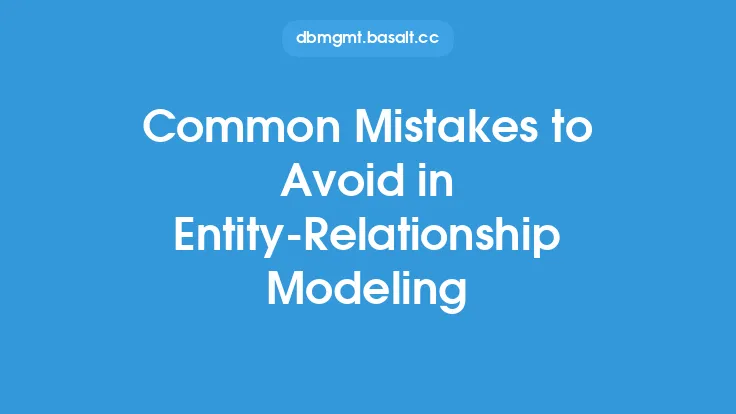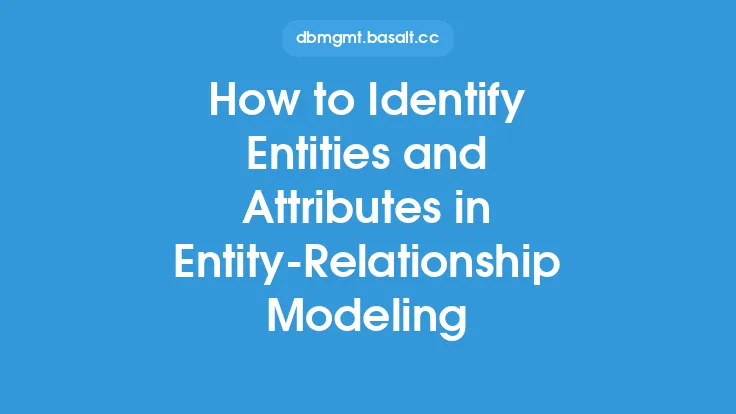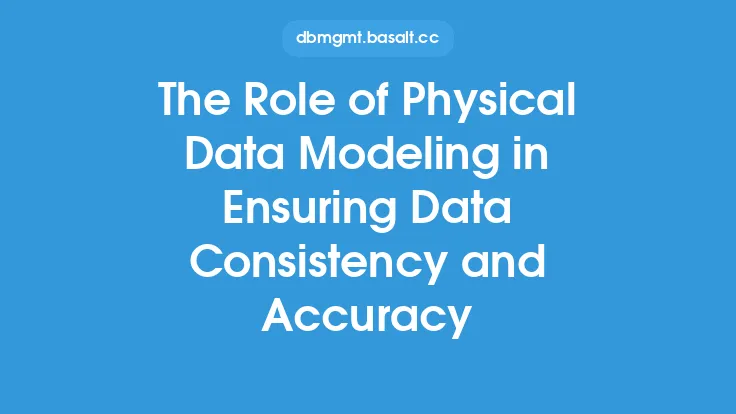Entity-Relationship Modeling (ERM) is a fundamental concept in database design that helps to create a conceptual representation of the data structure. It involves identifying entities, attributes, and relationships between them. Two essential concepts in ERM are cardinality and ordinality, which play a crucial role in defining the relationships between entities. In this article, we will delve into the importance of cardinality and ordinality in Entity-Relationship Modeling, exploring their definitions, types, and applications.
Introduction to Cardinality
Cardinality refers to the number of relationships between two entities. It defines the maximum number of instances of one entity that can be associated with a single instance of another entity. In other words, cardinality specifies the multiplicity of the relationship between two entities. There are three types of cardinality: one-to-one (1:1), one-to-many (1:N), and many-to-many (M:N). Understanding cardinality is essential in ERM, as it helps to define the structure of the database and ensures data consistency.
Introduction to Ordinality
Ordinality, on the other hand, refers to the order or sequence of the relationships between entities. It defines the ranking or priority of the relationships between entities. Ordinality is essential in ERM, as it helps to define the hierarchy of relationships between entities. There are two types of ordinality: total ordinality and partial ordinality. Total ordinality implies that the relationships between entities are totally ordered, meaning that each instance of one entity is associated with a specific instance of another entity. Partial ordinality, on the other hand, implies that the relationships between entities are partially ordered, meaning that some instances of one entity may be associated with multiple instances of another entity.
Types of Cardinality
There are three types of cardinality: one-to-one (1:1), one-to-many (1:N), and many-to-many (M:N). A one-to-one relationship exists when a single instance of one entity is associated with a single instance of another entity. For example, a person can have only one passport, and a passport is associated with only one person. A one-to-many relationship exists when a single instance of one entity is associated with multiple instances of another entity. For example, a customer can have multiple orders, but an order is associated with only one customer. A many-to-many relationship exists when multiple instances of one entity are associated with multiple instances of another entity. For example, a student can enroll in multiple courses, and a course can have multiple students.
Types of Ordinality
There are two types of ordinality: total ordinality and partial ordinality. Total ordinality implies that the relationships between entities are totally ordered, meaning that each instance of one entity is associated with a specific instance of another entity. For example, a company has a hierarchical structure, where each employee reports to a specific manager. Partial ordinality, on the other hand, implies that the relationships between entities are partially ordered, meaning that some instances of one entity may be associated with multiple instances of another entity. For example, a product can have multiple features, and a feature can be associated with multiple products.
Applications of Cardinality and Ordinality
Cardinality and ordinality have numerous applications in ERM. They help to define the structure of the database, ensure data consistency, and improve data integrity. Cardinality and ordinality are used to define the relationships between entities, which helps to identify the dependencies between them. This, in turn, helps to identify the potential data anomalies and inconsistencies. By understanding the cardinality and ordinality of the relationships between entities, database designers can create a robust and scalable database that meets the requirements of the application.
Best Practices for Implementing Cardinality and Ordinality
To implement cardinality and ordinality effectively in ERM, database designers should follow best practices. First, they should identify the entities and their attributes, and then define the relationships between them. Next, they should determine the cardinality and ordinality of the relationships, based on the business requirements and rules. Finally, they should validate the relationships to ensure that they are consistent and correct. Database designers should also consider the data integrity constraints, such as primary keys and foreign keys, to ensure that the data is consistent and accurate.
Challenges and Limitations
While cardinality and ordinality are essential concepts in ERM, they also present challenges and limitations. One of the challenges is to determine the correct cardinality and ordinality of the relationships between entities, which can be complex and time-consuming. Another challenge is to ensure that the relationships between entities are consistent and correct, which requires careful validation and testing. Additionally, cardinality and ordinality can be affected by changes in the business requirements or rules, which can impact the database design and structure.
Conclusion
In conclusion, cardinality and ordinality are fundamental concepts in Entity-Relationship Modeling that play a crucial role in defining the relationships between entities. Understanding cardinality and ordinality is essential in ERM, as it helps to define the structure of the database, ensure data consistency, and improve data integrity. By following best practices and considering the challenges and limitations, database designers can create a robust and scalable database that meets the requirements of the application. As database design continues to evolve, the importance of cardinality and ordinality will only continue to grow, making them essential concepts for database designers to master.





